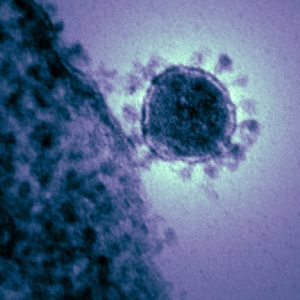We are all aware of the enormous effort of the medical community in the fight against coronavirus which has changed our behavior over the past few weeks. However, not everyone knows that medics are supported by numerous photonic technologies. Non-contact thermometers that are commonly used to measure temperature from a safe distance in a few seconds use sensitive infrared radiation detectors. Thanks to the development of such detectors it was possible to completely eliminate mercury thermometers in a few years. The latter required sterilization and took a few minutes to measure temperature with them. In the era of the ongoing pandemics, this change is revolutionary in terms of rapid identification of potentially infected people.

Other photonic technologies can be found behind the sealed doors of diagnostic laboratories. The technique used to detect the presence of coronavirus in material collected from patients (so-called reverse transcription polymerase chain reaction, RT-PCR) uses modern semiconductor lasers and ultra-sensitive detectors to record the light emitted by appropriate fluorescent markers. Similarly, semiconductor sources and light detectors are used to detect the presence of antibodies that indicate prior contact of the patient with the virus (so-called enzyme immunoassays) to investigate the emission or absorption of light by appropriate markers. The progress in photonic technologies, particularly the development of appropriate light sources and ultra-sensitive detectors, has allowed to increase the efficiency of these techniques and reduce the waiting time for results, which now translates directly into the number of people saved.
You can read more about the applications of photonic technologies in the fight against coronavirus here.
